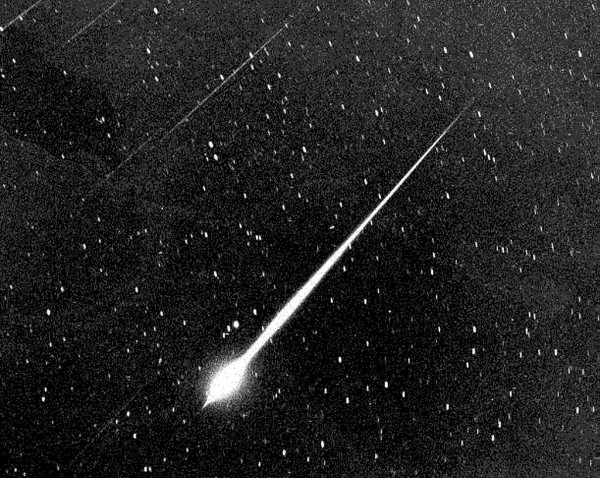Stargazing The Taurids Meteor Shower Before 2016 Ends
| Staff Reporter | | Nov 07, 2016 05:07 PM EST |
(Photo : NASA/Handout) This Bright Leonid Fireball is seen during the storm of 1966 in the sky above Wrightwood, Calif.
Before 2016 ends, the sky will treat us with Taurid activity. Taurid meteor shower is expected to amaze us this month. If you have missed the first stream last Nov. 4 and 5, you are lucky because you can still enjoy stargazing the Taurid meteor shower this Nov. 11 and 12.
The bright and spectacular fireballs of the Taurid shower can be observed as bigger, longer, and smaller than the usual meteors that we can spot this November, which makes the event remarkably amazing. This year, the meteor stream will only have a few fireballs, and we can expect approximately five meteors per hour.
Like Us on Facebook
"The South Taurids should produce their greatest number of meteors shortly after midnight on Nov. 5. Remember, it'll be possible to catch a fireball or two," according to Earth Sky.
The North Taurids will have their peak on the night of Nov. 11 until the dawn of Nov. 12.
"This is not one of these high-rate meteor showers, but when you see one, you will know it. They are very bright, and they are pretty consistent year after year," noted Bill Cooke of NASA's Meteoroid Environment Office.
"The best time to look for Taurids is after midnight, when Taurus is high in the sky and when the sky is dark and clear, with no moonlight to mask the fainter meteors," Cooke wrote in a blog post for NASA last year.
To find the Taurus constellation and look for a more precise location of the event, you have to spot the Orion constellation and then look north.
If you miss this Taurid meteor shower, do not worry because you have another chance this month to see shooting stars. The Leonid meteor shower is set to peak between Nov. 16 and Nov. 17.
Tagsmeteors, Taurid Meteor Shower, Astronmy, stargazing, fireball
©2015 Chinatopix All rights reserved. Do not reproduce without permission
EDITOR'S PICKS
-

Did the Trump administration just announce plans for a trade war with ‘hostile’ China and Russia?
-

US Senate passes Taiwan travel bill slammed by China
-

As Yan Sihong’s family grieves, here are other Chinese students who went missing abroad. Some have never been found
-

Beijing blasts Western critics who ‘smear China’ with the term sharp power
-

China Envoy Seeks to Defuse Tensions With U.S. as a Trade War Brews
-

Singapore's Deputy PM Provides Bitcoin Vote of Confidence Amid China's Blanket Bans
-

China warns investors over risks in overseas virtual currency trading
-

Chinese government most trustworthy: survey
-

Kashima Antlers On Course For Back-To-Back Titles
MOST POPULAR
LATEST NEWS
Zhou Yongkang: China's Former Security Chief Sentenced to Life in Prison

China's former Chief of the Ministry of Public Security, Zhou Yongkang, has been given a life sentence after he was found guilty of abusing his office, bribery and deliberately ... Full Article
TRENDING STORY

China Pork Prices Expected to Stabilize As The Supplies Recover

Elephone P9000 Smartphone is now on Sale on Amazon India

There's a Big Chance Cliffhangers Won't Still Be Resolved When Grey's Anatomy Season 13 Returns

Supreme Court Ruled on Samsung vs Apple Dispute for Patent Infringement

Microsoft Surface Pro 5 Rumors and Release Date: What is the Latest?










